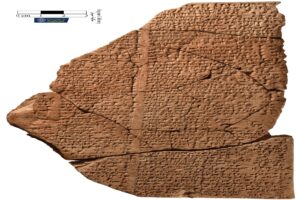A passion for the natural world drives many of our adventures. And when we’re not actually outside, we love delving into the discoveries about the places where we live and travel. Here are some of the best natural history links we’ve found this week.
Scientists use YouTube to study elephants: There are multiple stories about elephants mourning their dead, but there are very few scientific accounts. Studying their behavior is almost impossible. Asian elephants are elusive and happening upon them during this behavior is unlikely. So researchers turned to YouTube, relying that millions of pairs of eyes may have witnessed this a few times, and recorded it.
Indeed, they found 24 videos where elephants were mourning. The elephants stood over the bodies and touched them to investigate. They also reassured others with their heads and trunks. In some cases, mothers moved the bodies of their calves.
The mourning suggests what we’ve long suspected, that elephants are highly intelligent. The study “helps bridge that emotional divide between humans and other species,” said biologist Jack Tamisiea.

Great White Shark. Photo: Shutterstock
The great white shark dominated an ancient rival
Great white shark may have caused megalodon extinction: Scientists have used a new method to investigate the diet of the Otodus megalodon, an extinct species of mackerel shark. The megalodon lived between 23 and 3.6 million years ago. They are the largest known shark ever to exist, reaching up to 20m long.
Competition for food likely led to the sharks’ disappearance. Researchers compared the zinc isotope composition of the teeth of both the megalodon and the modern great white shark. It showed that their diets had a surprising overlap. Both hunted the same prey, supporting the theory that the great white’s superior adaptability pushed the megalodon to extinction.
Singing lava lakes predict eruptions: Lava began to accumulate in a crater of Hawaii’s Kilauea volcano in 2007. Over a decade later, the volcano erupted. Researchers have discovered that they can predict when the volcano will erupt again by listening to the vibrations made by these lava lakes.
A rock falling from the crater rim into the lava produces a seismic wave. The pitch and length of the wave store information about the condition of the magma. The duration of the seismic waves relates to the temperature of the magma and hints at the gas content of bubbles in the magma. This, in turn, can indicate when the volcano will erupt next.

Giraffes evolved long necks to compete for mates. Photo: Shutterstock
The surprising reason for a giraffe’s long neck
Giraffes evolved long necks to compete for mates: We’ve long believed that giraffes evolved long necks to feed on plants that other animals could not reach. But new research suggests that they may have actually evolved their mega-necks to compete for mates.
A 17-million-year-old fossil of an ancient relative of giraffes has complex series of joints between its head and spine and a hard ossicone on its head. These two structures made the animal highly adept at high-speed headbutting.
Today’s giraffes also compete for mates by headbutting and have hard horn-like ossicones on their heads. Their long necks allow them to put more force into their head butts with a whipping action. Individuals with longer necks are more likely to win fights and mates. This suggests that being able to eat hard-to-reach plants was just a fringe benefit of their competition for mates.
A plant bigger than Manhattan
World’s biggest plant discovered in Australia: The largest known plant on Earth grows off the coast of Australia. The seagrass covers an area of 200 sq km, which is three times the size of Manhattan.
Researchers were analyzing samples from the seagrass meadow in Shark Bay to understand more about the grass’s genetic diversity and how many plants made up the meadow. “The answer blew us away — there was just one!” said marine biologist Jane Edgeloe. The entire seagrass meadow developed from a single seed over the course of 4,500 years.

A Bronze Age city emerges from the water in Iraq. Photo: Universities of Freiburg and Tübingen, KAO
Ancient city re-emerges after drought: Kemune is a Bronze Age city in a reservoir on the Tigris River in northern Iraq. The 3,400-year-old city emerged from the water during a drought in 2010, but archaeologists couldn’t excavate anything until a drought in 2018.
Now they have had a second opportunity to study the site. A severe drought in early 2022 forced Iraq to use the reservoir’s water to irrigate crops. During this low-water period, archaeologists uncovered over 100 clay tablets from the Assyrian period. They also covered sections of the site in plastic sheeting to help protect the buildings as water once again began to rise.
The city is now completely submerged again. “It is completely unpredictable when the site will reappear. It could emerge as early as this summer or as late as a few years from now,” said archaeologist Ivana Puljiz.






